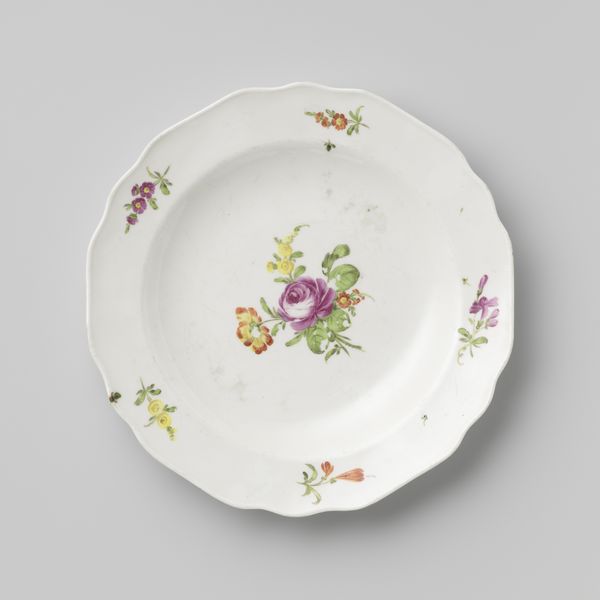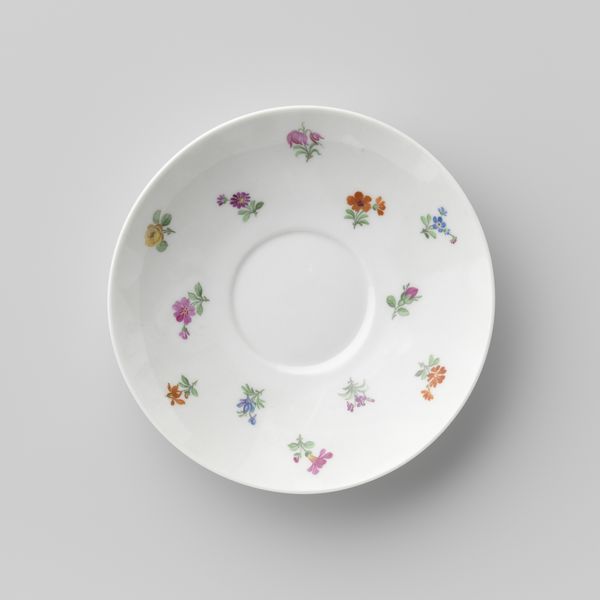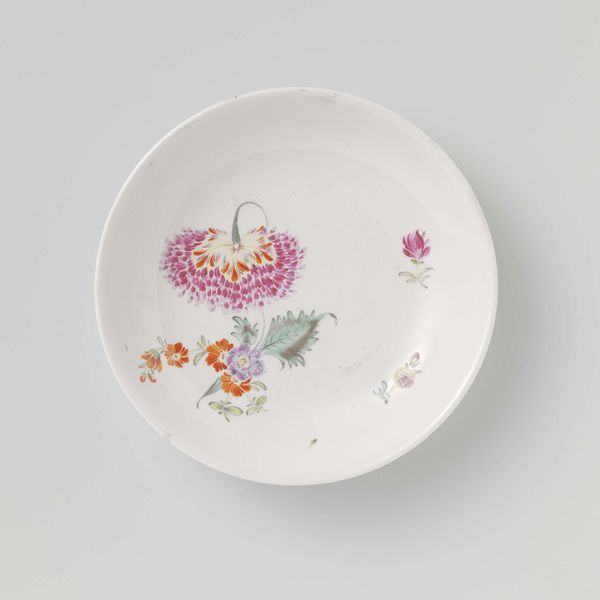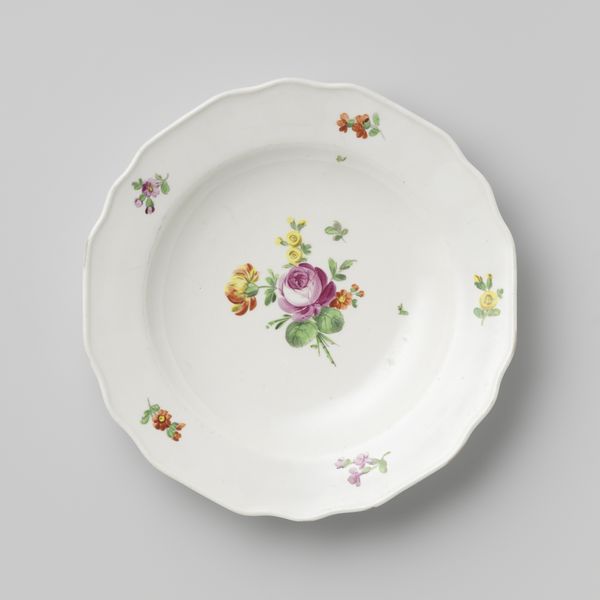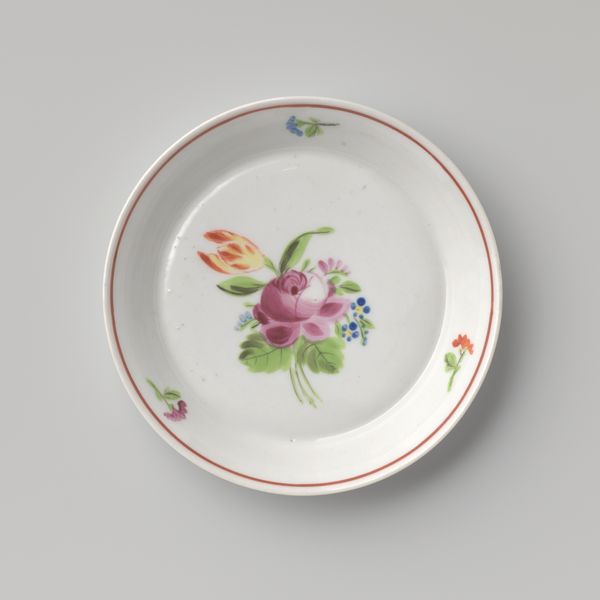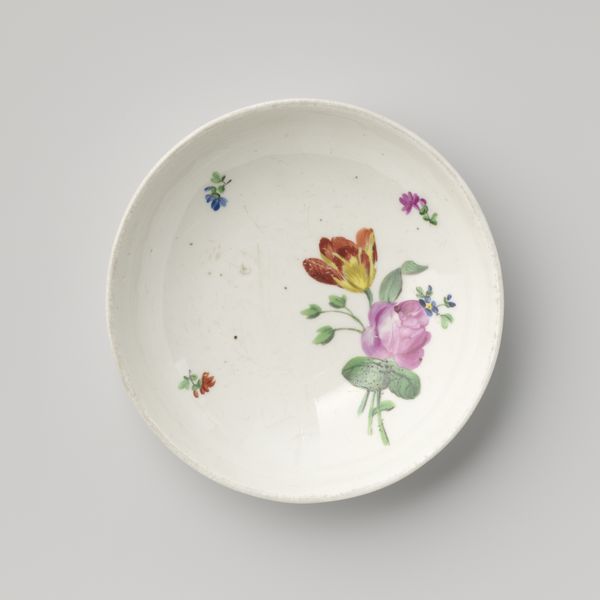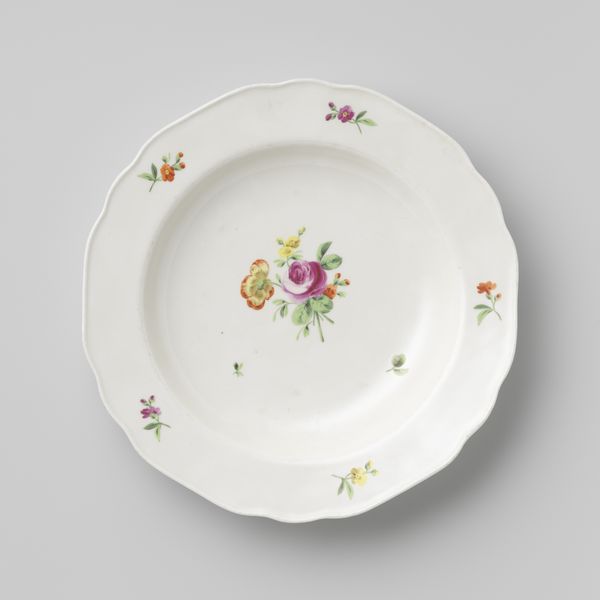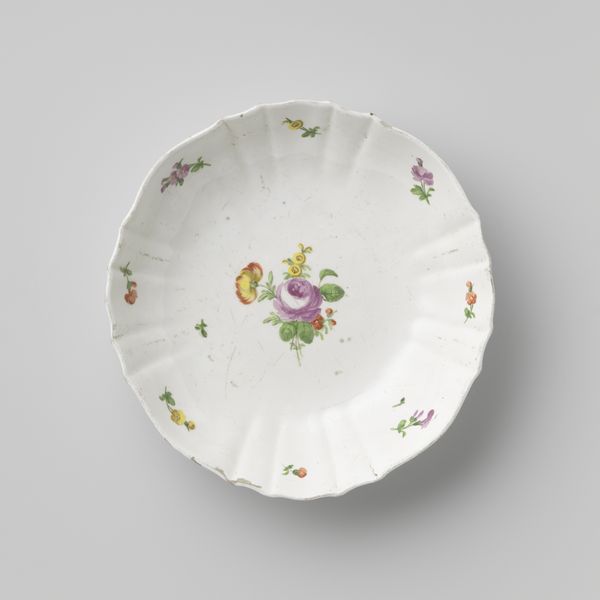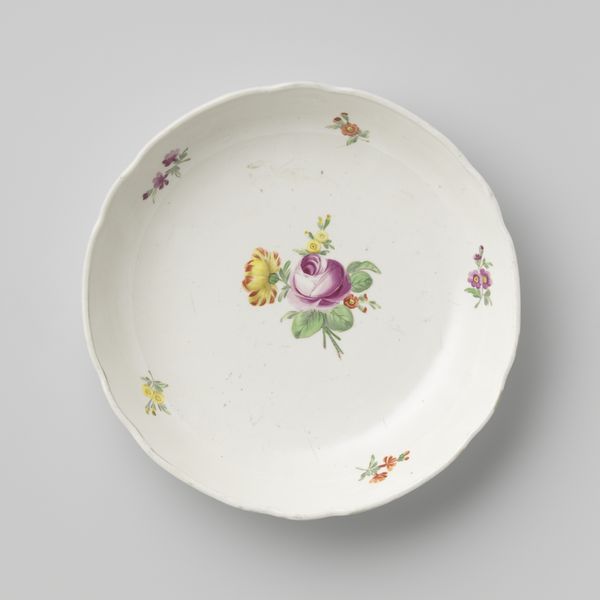
ceramic, porcelain
#
ceramic
#
porcelain
#
decorative-art
Dimensions: height 3 cm, diameter 13 cm, diameter 8.4 cm
Copyright: Rijks Museum: Open Domain
Curator: The delicacy of this porcelain saucer strikes me immediately; there is a crisp whiteness to its glaze that feels inherently elegant. Editor: Indeed. We’re looking at a piece entitled “Saucer with flowers,” made from porcelain sometime between 1837 and 1844 by the KPM, or Königliche Porzellan Manufaktur. It resides here at the Rijksmuseum. Curator: It feels distinctly feminine. Perhaps it's the charming, almost naively painted flowers scattered around the rim that evoke this feeling. These little sprigs remind me of secret gardens and pressed flower collections, a sort of idealized pastoral imagery. Editor: Yes, the flower motif is arranged to create an appealing decorative frame. Note the even spacing between the flowers; the composition follows a precise formal structure that complements the circular geometry of the saucer itself. Curator: These scattered blooms also echo a long-standing cultural association of flowers with ephemeral beauty and feminine virtue—ideas popular throughout the Victorian era and, I think, cleverly encoded here by KPM artisans. These weren’t merely decorative objects, but carriers of loaded symbolism for consumers. Editor: Quite, but what interests me is that even these simple forms carry complex geometry, an understanding of optics. Porcelain’s cool touch further elevates its sense of refined sophistication—and, therefore, its appeal. Curator: It's remarkable how a single object—something designed for such mundane usage as consuming tea—could encompass so much culturally potent symbolism. I love how, through floral designs, it transports us to Victorian sensibilities of domestic life, hinting at themes of beauty and morality prevalent then. Editor: It serves as a superb exercise in subtle composition—how simple form can gain depth. An important example of craftsmanship merging into fine art through shape, proportion and the careful placement of ornamental forms.
Comments
No comments
Be the first to comment and join the conversation on the ultimate creative platform.
